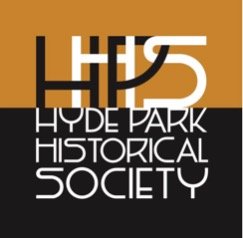1889-1960s:
A Village Becomes a City
The village of Hyde Park was annexed by the city of Chicago in 1889. The residents of central Hyde Park were opposed, but residents farther south voted overwhelmingly in favor, in the belief that they would receive better municipal services thereby.
Very soon, the advantage of being part of the city became apparent. The community was selected by the American Baptist Education Society as the site of the University of Chicago, well endowed by John D. Rockefeller and local philanthropists. The University of Chicago was founded in 1890 and model.
Buildings at the University of Chicago, with lily pond in foreground, Chicago, Illinois. Illinois Chicago, None. [Between 1890 and 1940] [Photograph] Retrieved from the Library of Congress, https://www.loc.gov/item/97504661/
Shortly thereafter, Chicago won the right to host the World’s Columbian Exposition of 1893. The selected location was what is now Jackson Park.
These two events led to a great building boom in the neighborhood, including workmen’s cottages, residential hotels, professors’ homes, businesses, parks and other institutions. During the first decades of the 20th century, the area was one of the choice residential sections of the city. In addition, there was a substantial arts colony, which included as residents writers Carl Sandburg, Vachel Lindsay, Ben Hecht, and Chicago Symphony conductors Theodore Thomas and Frederick Stock. The area was a center of progressive political and social activity in the city. Clarence Darrow was another of its most famous residents. During the late 19th and into the 20th century, Frank Lloyd Wright made significant additions to the area’s built environment, most notably with the Robie House at 58th and Woodlawn, considered by many to be the most important residence in American architectural history.
With the onset of the Great Depression housing construction and maintenance stagnated. The arrival of southern African-Americans in the Great Migration precipitated a massive “white exodus” from communities all over the south side. Many areas changed from all-white to all-black within a few years. There were some in the local community who hoped to prevent that from happening in Hyde Park. The Hyde Park-Kenwood Community Conference began with an interracial group that met in 1949. In 1952 the Southeast Chicago Commission was organized with the support of the University of Chicago and the business community. These two organizations worked in tandem during the period of federally-funded urban renewal from the mid-1950’s to the early 1970’s. A local savings and loan bank was founded to assure the availability of home mortgages in the area, when other lenders were often redlining any area undergoing racial change. New schools, shopping centers, and social service agencies were built or expanded, but at some cost. The various plans and projects were controversial in many ways and continue to be controversial as the South Side of Chicago is starkly segregated. Proponents of “urban renewal” claim the result has been the evolution of a stable multi-racial community which continues to attract new residents, although opponents point out the growing socio-economic divide.
Hyland, C. C. (1893) World's Fair. United States Illinois Chicago, 1893. [Photograph] Retrieved from the Library of Congress, https://www.loc.gov/item/2007663379/.




